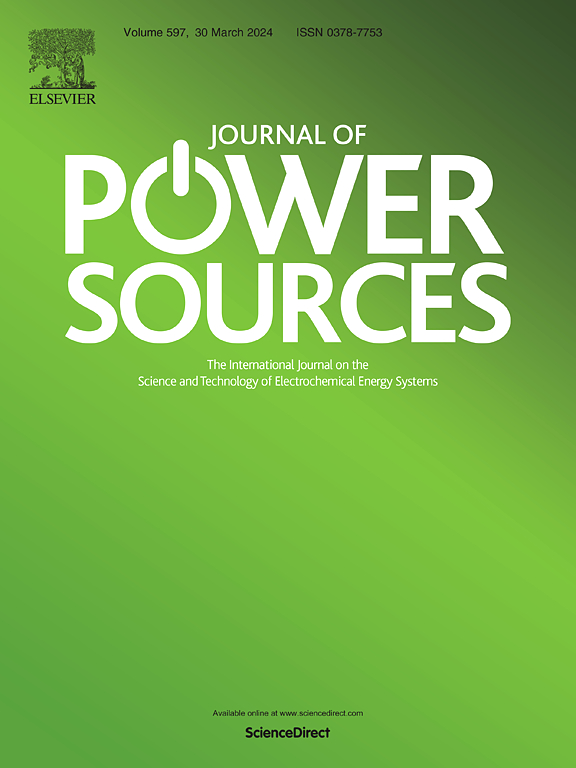High spatial resolution neutron imaging of lithium-ion batteries: Correlating microstructure and lithium transport
IF 7.9
2区 工程技术
Q1 CHEMISTRY, PHYSICAL
引用次数: 0
Abstract
Thick electrodes for lithium-ion batteries can increase the overall energy density, but increasing the electrode thickness introduces charge transport limitations. These limitations may be mitigated through proper electrode structuring. High spatial resolution neutron imaging was used to understand the correlation between microstructure and lithium transport in lithium-ion anodes. Batteries with distinct graphite anode microstructures were produced and studied with high spatial resolution in operando neutron radiography to observe the effects of structure on transport. High spatial resolution neutron computed tomography was performed following in operando neutron radiography. X-ray computed tomography and scanning electron microscopy were used to observe the finer scale anode structure to complement neutron imaging. Solvent-free anodes containing a tightly-packed layered structure confined lithium movement close to the separator. This structure limited capacity, but supported better rate capability. Conversely, a more open pore structure in the wet cast anodes yielded higher capacity with reduced rate capability. Together, these results show that lithium distributions can be controlled by the macroscopic structure of the electrodes, the microstructural pore network, and the microscale active areas that support electrochemical reactions. Furthermore, multimodal imaging applying the complementary strengths of neutron and X-ray methods is shown as a tool for advancing battery design.

锂离子电池的高空间分辨率中子成像:相关微观结构和锂输运
锂离子电池的厚电极可以增加整体能量密度,但增加电极厚度会引入电荷传输限制。这些限制可以通过适当的电极结构来减轻。采用高空间分辨率中子成像技术研究了锂离子阳极的微观结构与锂离子输运之间的关系。制备了具有不同石墨阳极微观结构的电池,并利用高空间分辨率的operando中子射线照相技术研究了结构对输运的影响。高空间分辨率中子计算机层析成像后,在operando中子射线摄影。利用x射线计算机断层扫描和扫描电镜观察更细尺度的阳极结构,补充中子成像。无溶剂阳极含有紧密堆积的层状结构,限制了锂靠近分离器的运动。这种结构限制了容量,但支持更好的速率能力。相反,在湿铸阳极中,更开放的孔隙结构产生更高的容量,但速率性能降低。总之,这些结果表明,锂的分布可以由电极的宏观结构、微观结构孔隙网络和支持电化学反应的微观尺度活性区域控制。此外,利用中子和x射线方法的互补优势,多模态成像被证明是推进电池设计的工具。
本文章由计算机程序翻译,如有差异,请以英文原文为准。
求助全文
约1分钟内获得全文
求助全文
来源期刊

Journal of Power Sources
工程技术-电化学
CiteScore
16.40
自引率
6.50%
发文量
1249
审稿时长
36 days
期刊介绍:
The Journal of Power Sources is a publication catering to researchers and technologists interested in various aspects of the science, technology, and applications of electrochemical power sources. It covers original research and reviews on primary and secondary batteries, fuel cells, supercapacitors, and photo-electrochemical cells.
Topics considered include the research, development and applications of nanomaterials and novel componentry for these devices. Examples of applications of these electrochemical power sources include:
• Portable electronics
• Electric and Hybrid Electric Vehicles
• Uninterruptible Power Supply (UPS) systems
• Storage of renewable energy
• Satellites and deep space probes
• Boats and ships, drones and aircrafts
• Wearable energy storage systems
 求助内容:
求助内容: 应助结果提醒方式:
应助结果提醒方式:


